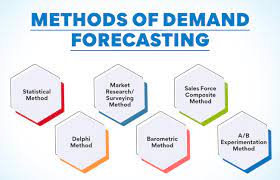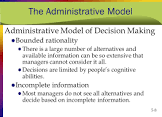Decision Making Models in Business
Effective decision making is crucial for the success of any business. There are several decision making models that can help business leaders make informed choices that align with their goals and objectives.
Rational Decision Making Model
The rational decision making model involves a systematic, step-by-step approach to decision making. It typically includes identifying the problem, gathering relevant information, evaluating alternatives, making a decision, and implementing and monitoring the decision.
Intuitive Decision Making Model
The intuitive decision making model relies on gut feelings and instincts rather than a structured approach. This model is often used in situations where time is limited or information is incomplete.
Bounded Rationality Model
The bounded rationality model acknowledges that decision makers may not have the time or resources to gather all relevant information. Instead, they make decisions based on limited information and cognitive biases.
Collaborative Decision Making Model
The collaborative decision making model involves involving multiple stakeholders in the decision-making process. This approach can lead to more creative solutions and increased buy-in from those affected by the decision.
Overall, understanding different decision-making models can help business leaders navigate complex situations and make effective decisions that drive success.
9 Essential Tips for Effective Decision Making in Business
- Define the problem clearly to understand what decision needs to be made.
- Gather relevant information and data to inform your decision-making process.
- Identify alternatives and consider multiple options before making a choice.
- Weigh the pros and cons of each alternative to evaluate potential outcomes.
- Use decision-making tools like SWOT analysis, cost-benefit analysis, or decision trees.
- Consider the short-term and long-term impacts of your decision on the business.
- Seek input from stakeholders or team members for diverse perspectives.
- Trust your intuition but back it up with logical reasoning and evidence.
- Review past decisions and their outcomes to learn from successes and mistakes.
Define the problem clearly to understand what decision needs to be made.
Defining the problem clearly is a crucial first step in the decision-making process in business. By clearly understanding the problem at hand, business leaders can identify the specific decision that needs to be made and focus their efforts on finding the most appropriate solution. Without a clear definition of the problem, decision makers may risk making uninformed choices or addressing symptoms rather than root causes. Taking the time to define the problem clearly sets the foundation for effective decision making and increases the likelihood of reaching successful outcomes.
Gather relevant information and data to inform your decision-making process.
Gathering relevant information and data is a crucial step in the decision-making process for businesses. By collecting accurate and up-to-date information, decision makers can make informed choices that are based on facts rather than assumptions. This helps to reduce risks and uncertainties associated with decision making, leading to more successful outcomes. Whether analyzing market trends, financial data, or customer feedback, having the right information at hand empowers business leaders to make strategic decisions that align with their objectives and drive growth.
Identify alternatives and consider multiple options before making a choice.
In the realm of decision making models in business, a crucial tip is to identify alternatives and consider multiple options before making a choice. By exploring various possibilities and evaluating different alternatives, business leaders can make more informed decisions that align with their goals and objectives. This approach allows for a comprehensive analysis of the potential outcomes and ensures that the chosen option is the most suitable for the given situation. Taking the time to consider multiple options can lead to better decision-making processes and ultimately contribute to the success of the business.
Weigh the pros and cons of each alternative to evaluate potential outcomes.
When utilizing decision making models in business, it is essential to carefully weigh the pros and cons of each alternative to evaluate potential outcomes. By thoroughly considering the advantages and disadvantages of each option, business leaders can make informed decisions that align with their objectives and mitigate risks. This analytical approach allows for a comprehensive assessment of the potential impact of each alternative, ultimately leading to more strategic and effective decision-making processes within the business environment.
Use decision-making tools like SWOT analysis, cost-benefit analysis, or decision trees.
In business decision making, utilizing tools such as SWOT analysis, cost-benefit analysis, or decision trees can provide valuable insights and clarity. SWOT analysis helps to identify internal strengths and weaknesses, as well as external opportunities and threats, enabling businesses to make strategic decisions. Cost-benefit analysis helps evaluate the potential costs and benefits of different options, aiding in selecting the most cost-effective course of action. Decision trees visually map out possible outcomes and probabilities, assisting in risk assessment and optimal decision making. By incorporating these decision-making tools, businesses can enhance their analytical capabilities and make well-informed decisions that align with their objectives.
Consider the short-term and long-term impacts of your decision on the business.
When making decisions in business, it is essential to consider both the short-term and long-term impacts of your choices. While focusing on short-term gains may provide immediate benefits, it is crucial to evaluate how your decision will impact the business in the long run. Considering the long-term implications can help you make strategic decisions that align with the overall goals and sustainability of the business. By weighing both short-term and long-term effects, you can ensure that your decisions contribute to the growth and success of the business in a sustainable manner.
Seek input from stakeholders or team members for diverse perspectives.
Seeking input from stakeholders or team members for diverse perspectives is a valuable tip in decision making models for businesses. By involving individuals with different backgrounds, experiences, and expertise in the decision-making process, businesses can gain a broader understanding of the issue at hand and consider a wider range of potential solutions. This collaborative approach not only fosters creativity and innovation but also ensures that decisions are well-informed and take into account the interests and concerns of all stakeholders involved. Ultimately, seeking input from diverse perspectives can lead to more effective and sustainable decisions that benefit the business as a whole.
Trust your intuition but back it up with logical reasoning and evidence.
In the realm of decision making models in business, it is essential to trust your intuition while also supporting it with logical reasoning and concrete evidence. Intuition can often provide valuable insights and quick decision-making abilities, especially in time-sensitive situations or when faced with incomplete information. However, to ensure the best outcomes for your business, it is crucial to supplement your intuition with logical reasoning and evidence-based analysis. By combining intuition with critical thinking and evidence, you can make well-informed decisions that are both instinctual and rational, leading to more successful outcomes for your business endeavors.
Review past decisions and their outcomes to learn from successes and mistakes.
Reviewing past decisions and their outcomes is a valuable tip in business decision making. By reflecting on both successful and unsuccessful decisions, businesses can gain insights into what worked well and what could have been done differently. Learning from past experiences helps in improving future decision making processes, avoiding repeating mistakes, and building on successes. This practice of continuous learning and adaptation based on past outcomes can lead to more informed and effective decision making in the long run.




